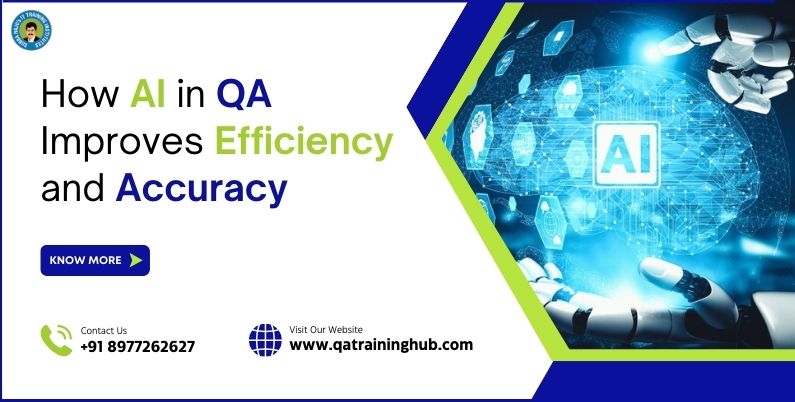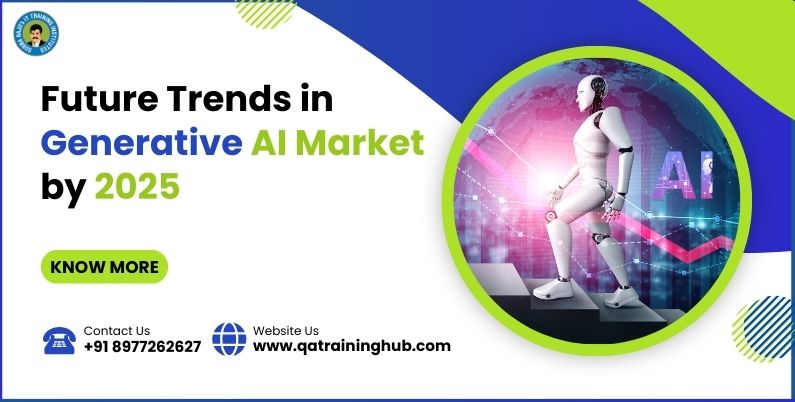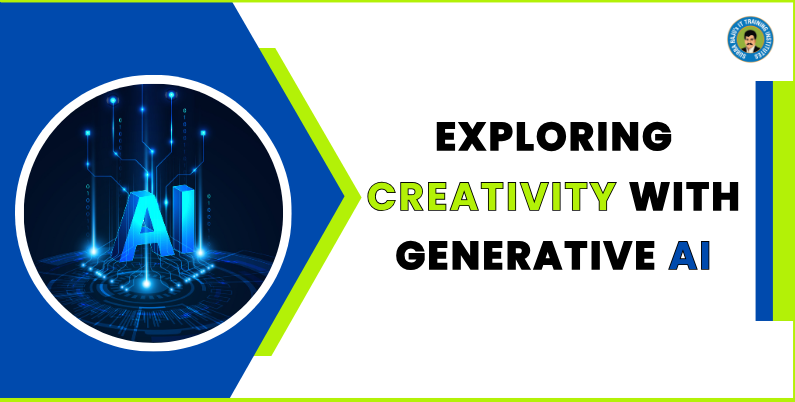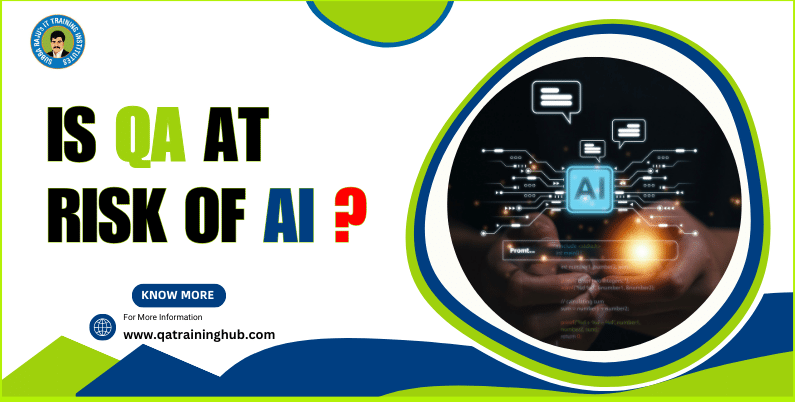
Revolutionizing Quality Assurance Through Artificial Intelligence: A Comprehensive Guide
Quality Assurance (QA) is really important in ensuring the reliability and functionality of software applications. Typically, traditional QA methods find it challenging to match the growing complexity and size of today’s software systems. With the rise of artificial intelligence (AI) technologies, the QA field is experiencing a significant transformation.AI-driven QA solutions empower organizations to streamline testing procedures, expand test coverage, and elevate the overall quality of software. This thorough guide explores Transforming QA Through Artificial Intelligence, covers different AI-based testing methods, and discuss the benefits and challenges associated with implementing AI in QA.
Understanding the Role of AI in QA
Artificial intelligence is revolutionizing software testing by analyzing large data sets and learning from patterns.AI-powered QA solutions utilize machine learning algorithms, natural language processing (NLP), computer vision, and other AI techniques to automate testing, detect defects, and improve test coverage. AI algorithms mimic human cognitive functions, allowling to smartly identify anomalies, predict possible issues, and adjust testing methods as requirements change.
AI-Powered Testing Techniques
1. Test Automation:
Traditional test automation requires manually scripting test cases, which can consume time and be susceptible to errors.AI-driven test automation solutions use machine learning algorithms to automatically generate test scripts, based on application behavior and user interactions. These solutions also include self-learning abilities, allowling them to adjust to changes in the application being tested without requiring significant manual input.
2. Intelligent Test Generation:
AI-powered testing tools utilize methods like genetic algorithms and reinforcement learning to dynamically generate test scenarios. These tools examine application code, user inputs, and historical data to identify important paths and edge cases for testing. Through smartly prioritizing test scenarios, AI-driven test generation techniques boost test coverage and lessen the chances of missing potential defects.
3. Predictive Analytics:
Predictive analytics are essential in AI-driven QA as they forecast potential defects and performance issues before they arise. AI algorithms examine past test data, code modifications, and environmental variables to recognize patterns that may indicate future problems. By addressing these risks proactively, organizations can reduce the impact of defects and ensure a smoother release process.
4. Natural Language Processing (NLP) for Requirements Analysis:
NLP-powered QA tools extract and analyze documents like requirements, user stories, and other texts to create test cases automatically. By grasping the meaning and context of natural language, these tools can detect ambiguities, inconsistencies, and missing requirements early in the development cycle. Using NLP for requirements analysis improves collaboration among stakeholders and lowers the risk of misinterpretation during testing.
5. Computer Vision for UI Testing:
UI testing is crucial for ensuring software applications are usable and visually appealing. AI-driven UI testing tools use computer vision algorithms to analyse screen layouts, identify UI elements, and confirm graphical rendering on various devices and resolutions. By visually simulating user interactions, these tools can detect UI defects that might be overlooked with traditional testing methods.
Benefits of AI in QA
Integrating AI technologies into QA processes provides several compelling benefits for organizations:
Increased Efficiency:
AI-driven QA solutions automate repetitive tasks like generating test cases, executing tests, and analyzing results. This allows QA teams to concentrate on more strategic activities. By reducing manual effort and accelerating testing cycles, organizations can achieve faster time-to-market without compromising on software quality.
Enhanced Test Coverage:
AI algorithms can explore extensive solution spaces and uncover test scenarios that human testers might overlook. By smartly prioritizing test cases using risk factors and historical data, AI-driven testing techniques can achieve greater test coverage and uncover critical defects early in the development cycle.
Improved Accuracy:
AI-powered QA tools demonstrate greater accuracy and consistency compared to manual testing methods. By removing human errors and biases, AI algorithms guarantee dependable test results and reduce the chance of false positives and false negatives. This allows organizations to make informed decisions based on reliable testing data.
Adaptive Testing Strategies:
AI-driven QA solutions continually learn from past testing experiences and adjust their testing strategies based on changing requirements and application modifications. By adjusting test coverage and priorities dynamically, AI algorithms ensure resources are allocated optimally and maximize the effectiveness of QA efforts as business needs evolve.
Cost Savings:
By automating labor-intensive QA tasks and improving test coverage, AI-driven testing solutions can considerably decrease testing costs over time.
Organizations can achieve higher productivity with fewer resources, leading to improved cost-efficiency and greater return on investment (ROI) from their QA initiatives.
Challenges and Considerations:
While AI offers numerous benefits in QA, organizations may face several challenges when implementing AI-driven testing solutions:
Data Quality and Availability:
AI algorithms need large amounts of high-quality training data to perform optimally. Organizations need to ensure they have access to relevant and representative datasets to train AI models effectively. Furthermore, concerns regarding data privacy and security may limit access to sensitive information necessary for training AI algorithms.
Skill Gap and Training:
AI technologies are relatively new to many QA professionals, prompting organizations to invest in training and upskilling initiatives to fully harness the potential of AI in QA. Closing the skill gap and promoting a culture of ongoing learning are crucial for effectively adopting and integrating AI-driven testing techniques into existing QA processes.
Interpretability and Transparency:
AI-driven QA tools often function like black-box systems, which can make it difficult to understand the reasoning behind test results and interpret the underlying decision-making process. Organizations must prioritize transparency and interpretability in AI algorithms to build trust and confidence among stakeholders and facilitate effective collaboration between QA teams and development teams.
Over-reliance on Automation:
Although AI-powered test automation brings notable efficiency gains, organizations must find a balance between automation and manual testing. This ensures comprehensive test coverage and retains the human touch in QA processes. Essential aspects like exploratory testing, usability testing, and user feedback can’t be entirely automated and depend on human judgment and creativity.
Scalability and Integration:
Scalability and smooth integration with current QA tools and processes are crucial factors for the successful deployment of AI-driven testing solutions.
Organizations need to evaluate the scalability of AI algorithms to meet expanding testing requirements and guarantee compatibility with existing infrastructure, tools, and workflows.
Conclusion:
In conclusion, the integration of artificial intelligence into quality assurance practices represents a major change in software testing methodologies. Transforming QA through Artificial Intelligence not only streamlines testing processes but also improves test coverage, accuracy, and adaptability. By using AI-powered testing methods like automated testing, smart test creation, predictive analysis, understanding human language, and visual recognition, organizations can reach new heights of efficiency and success in quality assurance.
Even though there are difficulties in adopting AI for quality assurance, such as ensuring data quality, addressing skill gaps, understanding results, scaling the approach, and integrating it into existing systems, the advantages outweigh these challenges by far. With the right strategies in place, organizations can overcome these challenges and utilize the full potential of AI to drive innovation and deliver high-quality software products to market faster.
Join us at QA Training Hub and know the Transforming QA through Artificial Intelligence and start on a journey of continuous learning and innovation in AI-driven quality assurance. Together, lets transform QA practices and the way for a future where software testing is smarter and faster.







